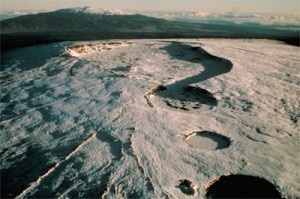
Swelling of the volcano's magma reservoir created lengthening, uplift and tilting. 2003, inflation once again occurred at Mauna Loa's Moku`aweoweo summit caldera. Carbon dioxide levels measured at NOAA’s Mauna Loa Atmospheric Baseline Observatory peaked at 424 parts per million. It last erupted in March and April of 1984, sending a flow of. Visitors to Hawaii’s Big Island are getting quite a show as Mauna Loa, the world’s largest active. The 1992 lava flow hazard zone map is also available as a downloadable KMZ file, and you can read more about viewing it in Google Earth or as a GIS layer in the June 10, 2005, Volcano Watch article. This information was summarized from the GVP/USGS Weekly Volcanic Activity Report Mauna Loa rises 4,169m (13,678 feet) above the Pacific Ocean, part of the chain of volcanoes that formed the islands of Hawaii. Mauna Loa, the world’s largest active volcano, is erupting for the first time in 40 years. The long-term lava-flow threat is greatest on Klauea and Mauna Loa, the two most active volcanoes, followed by Huallai. HVO believes magma replenishment within the volcano's reservoir may be the cause of inflation. Geological Survey, January 10, 1985.Īfter nearly 10 years of slight deflation, inflation was observed where lengthening of the lines across the summit caldera was monitored. 00:52 Mauna Loa: world’s largest active volcano erupts for first time in 38 years video Officials told residents to be prepared to evacuate if lava flows started heading toward populated. Mauna Loa is among Earth's most active volcanoes, having erupted 34 times since its first well-documented historical eruption in 1843. The summit of Kilauea volcano is left of center. This name is apt, for the subaerial part of Mauna Loa extends for about 120 km (74 mi) from the southern tip of the island to the summit caldera and then east-northeast to the coastline near Hilo. This photograph looks to the southwest to the northeast rift of Mauna Loa. The last eruption was in 1984 and sent lavas within 4 miles (6.5 km) of Hilo. Mauna Loa is in the shield-building stage and is one of the most active volcanoes on Earth, erupting 15 times since 1900. Snow caps the summits of Mauna Loa (center) and Mauna Kea (toward the top, center) volcanoes on the island of Hawai‘i. There is a caldera, Mokuaweoweo, at the summit and rift zones extend to the northeast and southwest.


Mauna Loa began to form nearly a million years ago. CO2 at the Mauna Loa Atmospheric Baseline Observatory reached 424 parts per million in May. It makes half of the area of the Island of Hawaii. The Mauna Loa volcano erupts, as seen from Mauna Kea near Hilo, Hawaii, U.S. Mauna Loa is the largest volcano on Earth with an estimated volume of 9,600 cubic miles (40,000 cubic kilometers).


 0 kommentar(er)
0 kommentar(er)
